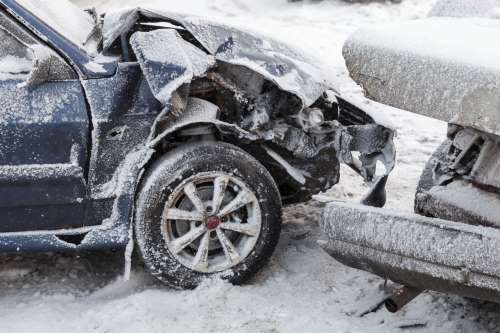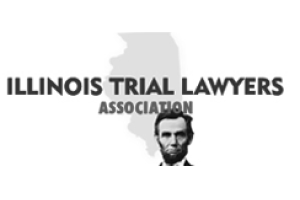- Free Consultation: (630) 527-4177 Tap Here to Call Us
Top 5 Winter Driving Mistakes In Icy Conditions

A snowy landscape may look serene, but for drivers, it’s a danger zone on the roads. According to the National Highway Traffic Safety Administration (NHTSA), over 150,000 car accidents occur annually due to icy conditions. With hazards like snow-covered roads, black ice, reduced visibility, and overconfidence in technology, winter driving can quickly turn deadly. Naperville car accident attorney, John J. Malm, emphasizes, “You can’t control the winter, but you can take measures to help control how you drive through it.”
Top Winter Driving Mistakes—and How to Avoid Them
1. Speeding Through the Freeze: The Federal Highway Administration states that speeding contributes to 70% of winter crashes. A 2024 NHTSA report highlights that 43% of drivers fail to reduce speed during winter conditions. Recently, on Route 59, a speeding SUV caused a three-car collision on black ice, demonstrating how crucial slower speeds and increased following distances are.
2. The Panic Brake: The Insurance Institute for Highway Safety (IIHS) found that sudden braking leads to 40% more rear-end collisions in winter. Anti-lock braking systems, often relied upon by drivers in snowy and icy conditions, only helps if used correctly, with steady pressure. Practice controlled braking in safe conditions to prepare for the real challenge.
3. Trusting All-Weel Drive to Save You: Michelin Tires research found that all-wheel drive improves acceleration time on snow, but it does not help you reduce stopping distance. In one study, vehicles with all-wheel drive and winter tires stopped 25% faster than those with all-wheel drive alone. Naperville car accident attorney John Malm warns, “All-wheel drive and other active safety features like dynamic stability control can help you go in straight line, but it won’t help you when you need to stop on icy roads. Consider installing a good set of snow tires, and slow down to keep a safe stopping distance from the vehicles ahead.”
4. Neglecting Maintenance: Continental Tires found that underinflated tires increase stopping distances by up to 15%. Check tire pressure regularly, especially as temperatures drop by 1 PSI per 10°F decrease.
5. Driving Blind: NHTSA reports that poor visibility contributes to 20% of winter crashes. On I-294, a driver with iced-over windows rear-ended another car. Clear all windows and use daytime running lights to increase visibility.
The Technology Trap: Overconfidence in Safety Features
AAA reports that 75% of drivers overestimate the abilities of anti-lock braking systems, all-wheel drive, and lane-keeping assist. A joint study with IIHS shows that drivers using safety tech are 30% more likely to tailgate. DuPage County car accident lawyer John J. Malm, adds, “Technology is an aid, not a replacement for safe driving. We’ve seen too many cases where overconfidence in these systems leads to serious accidents.”
Winter Crash Lessons – Two Possible Examples of Winter Driver Mishaps
I-88 Pileup on a January Morning:
On a snowy morning, a driver speeds on black ice, triggering a serious multi-car collision. The Illinois Department of Transportation (IDOT) report would likely show excessive speed as a cause of such a crash. This case would be an example of driver overconfidence in icy conditions. “This type of crash shows that all-wheel drive can help you accelerate, but it can’t shorten the needed stopping distance in winter driving conditions.” -John J. Malm.
DuPage County Rear-End Collision:
During a mid-afternoon snow squall in February, a driver relying on lane-keeping assist rear-ends another vehicle on Route 59 in Naperville. A crash investigation might find that the lane-keeping system may not have been capable of properly seeing the driving lane or detecting objects on the road in snowy conditions. This example highlights how technology can malfunction in real-world winter weather. John J. Malm stresses, “Safety tech has limits—drivers must stay engaged.”
How would you react to these two situations as a driver?
The Science of Black Ice: The Invisible Danger

According to NOAA, black ice forms when moisture freezes rapidly on cold road surfaces, typically on bridges and shaded areas. It’s nearly invisible, making it one of winter’s most dangerous hazards. Experts from AAA recommend these signs to detect black ice: a glossy sheen on the road and sudden changes in road noise. If you hit black ice, steer smoothly and avoid braking abruptly.
When Handling Black Ice: Stay Calm, Stay in Control
As the U.S. Forest Service advises, when driving on black ice, take calm, slow maneuvering. If you hit black ice, remain calm and avoid sudden reactions. Let your car pass over the ice without braking and keep the steering wheel straight. If the back of your vehicle starts to slide, gently turn the steering wheel in the same direction as the slide. Fighting the skid by steering in the opposite direction increases the risk of losing control or spinning out.
Winter Tire Comparison: All-Season vs. Winter Tires
Consumer Reports testing found that winter tires outperform all-season tires by 35% on icy roads due to their cold-resistant rubber compounds and deeper treads. Michelin states that winter tires can reduce stopping distances by 25% compared to all-season tires. Naperville car accident lawyer John J. Malm, advises, “Living here in the Chicago suburbs for most of my life, and having litigated hundreds of car accident cases across Illinois for over three decades, I have seen firsthand how the tires you choose can be an essential safety device for winter driving. There’s a noticeable difference in the rubber compound and usable tread between all-season tires and snow tires. If you drive regularly in winter conditions, winter tires are not just preferred, they are necessary.”
Who Is Liable in Winter Crashes?
Illinois follows a comparative negligence law, which means multiple parties can share the fault in causing an accident. For example, if a driver fails to reduce speed on icy roads, they can be found partially liable, even if another vehicle initiated the collision. John J. Malm explains, “Winter conditions don’t absolve drivers of responsibility. Courts look closely at the reasonableness of each vehicle’s speed, maintenance, and driver behavior.”
Reasons Why Insurance Deny Car Accident Claims After a Winter Crash
A 2023 study by the Insurance Information Institute found that 22% of winter crash claims are disputed due to conflicting accounts of fault. Common issues after a bad weather accident include:
- Fault Disputes: Insurers often blame drivers for failing to adapt to weather conditions.
- Vehicle Maintenance: Claims are denied if insurers prove tires were bald or brakes were faulty.
- Lack of Evidence: Claims fail without photos, witness statements, or police reports.
John J. Malm advises, “After a crash, document everything. Weather conditions, vehicle damage, and witness accounts can make or break your claim.”
Winter Car Accident Trends Over Time
According to NHTSA, winter crashes have increased by 15% from 2015 to 2024, with significant spikes during early winter storms. IDOT reported a record-breaking 8,000 winter crashes in Illinois during 2023, a 10% increase from 2022. Meanwhile, states with mandatory winter tire laws saw a 20% reduction in winter-related crashes. These statistics show that preparation and proper equipment can significantly reduce risk of a serious car accident on snowy and icy roads.
Practical Tips for Safer Winter Driving
- Reduce Your Speed: The National Safety Council found that lowering speeds by 10 mph in snowy conditions reduces crash risk by 28%.
- Use Winter Tires: Proven to shorten stopping distances by 25%, making them essential for icy roads.
- Check Tire Pressure: Low pressure reduces traction—check weekly in winter.
- Clear Visibility: Remove ice from all windows and mirrors; visibility is crucial.
- Prepare an Emergency Kit: Include blankets, non-perishable food, water, a flashlight, jumper cables, and a phone charger.
Illinois injury attorney John J. Malm concludes, “The most advanced technology and best tires in the world won’t replace caution, experience, and preparation. Winter driving is about managing risk with smart habits and safe choices.” If an accident does occur, knowing your rights is essential. The award-winning Naperville car accident attorneys at John J. Malm & Associates stand ready to help victims of winter crashes navigate their legal options and pursue the compensation they deserve.
Contact John J. Malm & Associates for Experienced Car Accident Representation in Illinois
If you’ve been involved in a winter-related car accident in Naperville, DuPage County, or anywhere in Illinois, it’s essential to act quickly to safeguard your legal rights. Taking prompt steps after an accident helps protect your interests and can streamline the path to recovery and resolution.
At John J. Malm & Associates, our experienced personal injury attorneys in Naperville represent clients throughout Illinois with dedication and a results-driven approach. We fight for victims of serious car accidents and are ready to help you navigate your legal options. Contact us today for a free consultation. Our team of dedicated Illinois injury attorneys will guide you through your rights and pursue the compensation you deserve.









